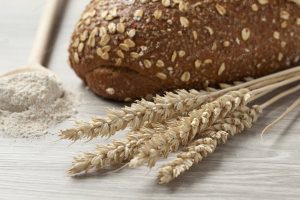Health
Why Eat Whole-Wheat Bread?
To know the reason why we should eat whole-wheat bread, we must first start with what whole-wheat bread is and how it differs from the usual bread. A single wheat grain consists of three layers- the endosperm, germ, and bran. Where the usual wheat flour is made from the starchy endosperm alone (the germ and bran are removed through milling), the whole-wheat flour is made with the entire grain, including the germ and bran. Since it so happens that the germ and bran part of the grain are the more nutritious parts, whole-wheat bread undoubtedly becomes so much healthier than your normal bread.
What the whole-wheat bread has that the normal bread doesn’t:
Since the usual bread sheds off its germ and bran, it loses essential nutrition and pales in comparison to the whole-wheat bread. The germ and bran present in whole-wheat bread contain vitamins B1, B2, B3 and E, folic acid, calcium, zinc, phosphorus, iron, copper and the most important of them all- dietary fiber. Our present-day food consumption is largely dominated by refined foods and hence, there is a lack of dietary fiber in our nutritional intake. Whole-wheat bread solves this problem effectively. While the usual bread is nothing but carbohydrates mostly whole-wheat bread is packed with vital nutrients.

Health benefits of whole-wheat bread:
Apart from having all the goodness of the above mentioned vitamins and minerals, whole-wheat bread also has several other facets when it comes to being a health food. It is high in complex carbohydrates, the kind that takes longer to break down and absorbed more slowly and hence does not raise glucose and insulin levels in the body. Add to it the richness of dietary fiber and you’ll feel full with a minimal serving and will not get hungry as often as you used to. Whole-wheat bread is also low in saturated fat, so you need not worry about your waistline. Many weight-loss diets recommend whole-wheat bread since it burns up belly fat faster and also contains fewer amounts of calories. It also has an abundant of protein to get you going all day. Switching to whole-wheat bread from the usual bread can also help in preventing cardiovascular diseases, metabolic syndromes, gallstones, type 2 diabetes, chronic inflammation and promotes gastrointestinal health and women’s health.
How to make the switch:
To those of you who are wondering how exactly you could include whole-wheat bread into your everyday menu, the answer is as simple as it could get- every possible way! You can swap whole-wheat bread slices for you morning toast or for your sandwiches. You can replace white bread with whole-wheat bread in any bread recipe and you would have made the recipe many times more nutritional. Apart from being healthy, whole-wheat breads have a unique aroma that is fresh and enticingly delicate. An even better way to include whole-wheat bread is to use it for your baked recipes like cakes and cup cakes. You can make croutons out of the day-old loaf or use them to thicken soup. The versatility of whole-wheat bread is endless.
The reason why we must eat whole-wheat bread is simple- it is doubly healthier than normal bread. It keeps you fit, energetic and full and you need not have to compromise with taste to avail its benefits. What more can you ask for? It is high time you make the switch to whole-wheat bread from your usual bread. You will be missing out on so much of natural nutrition otherwise.




















